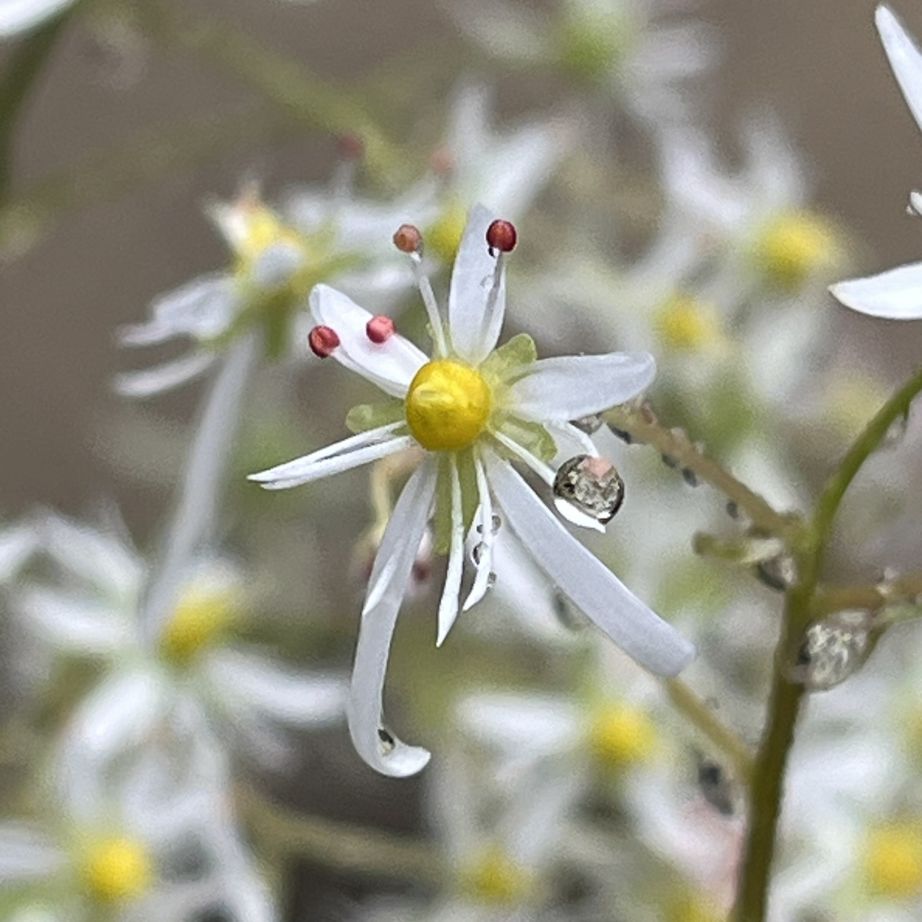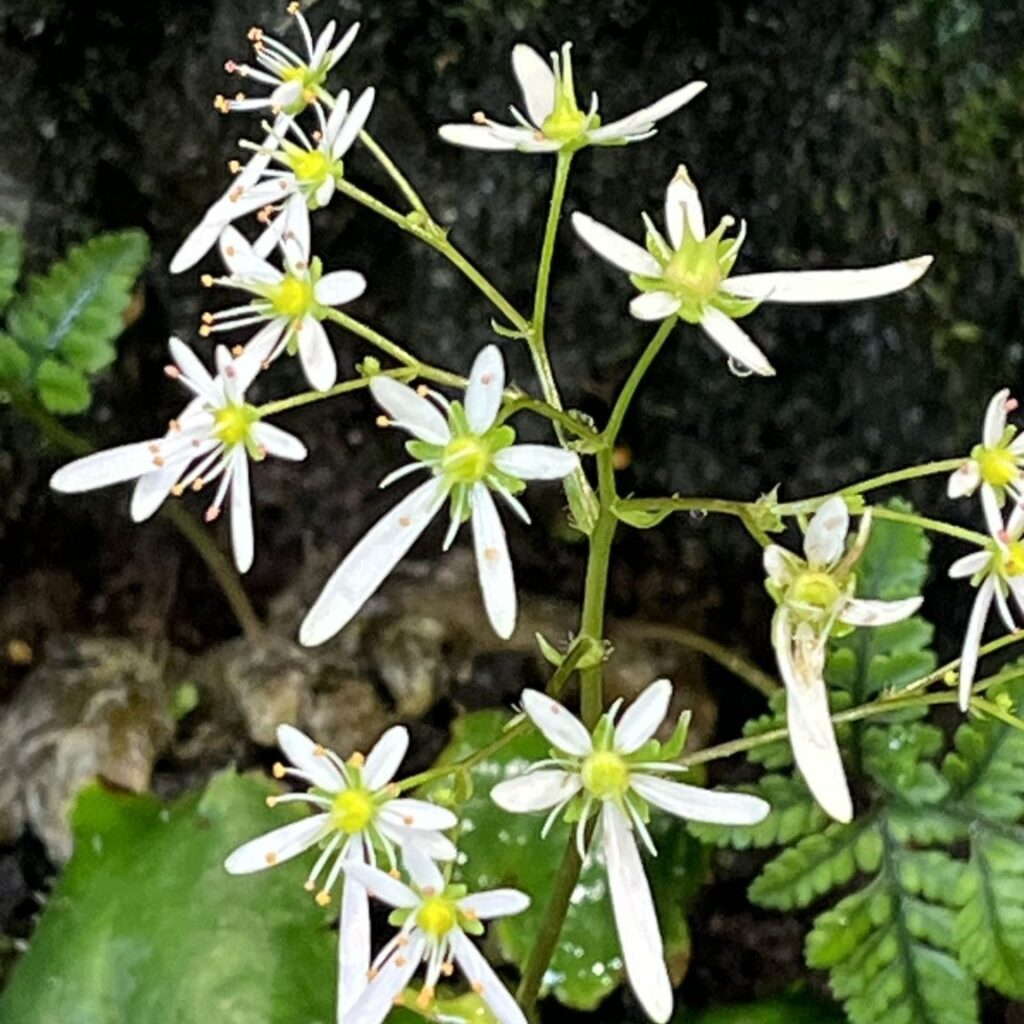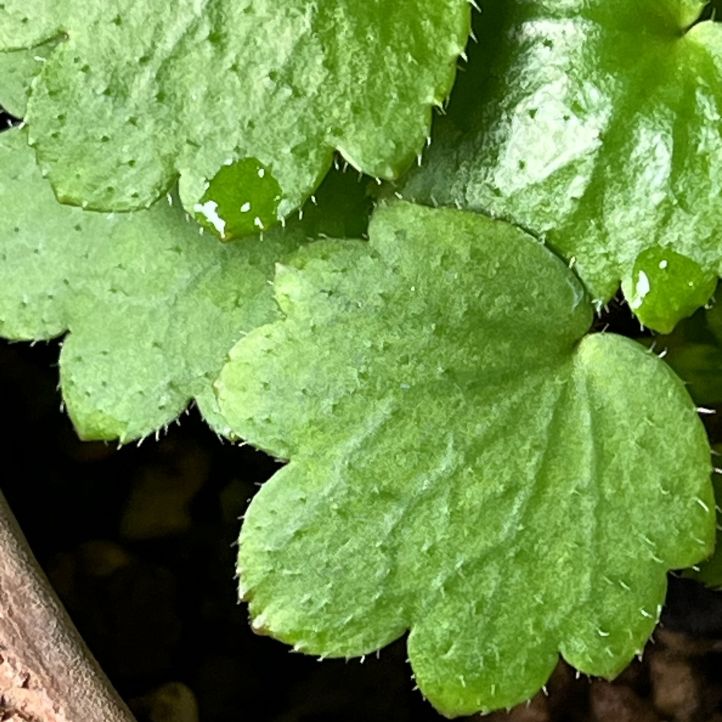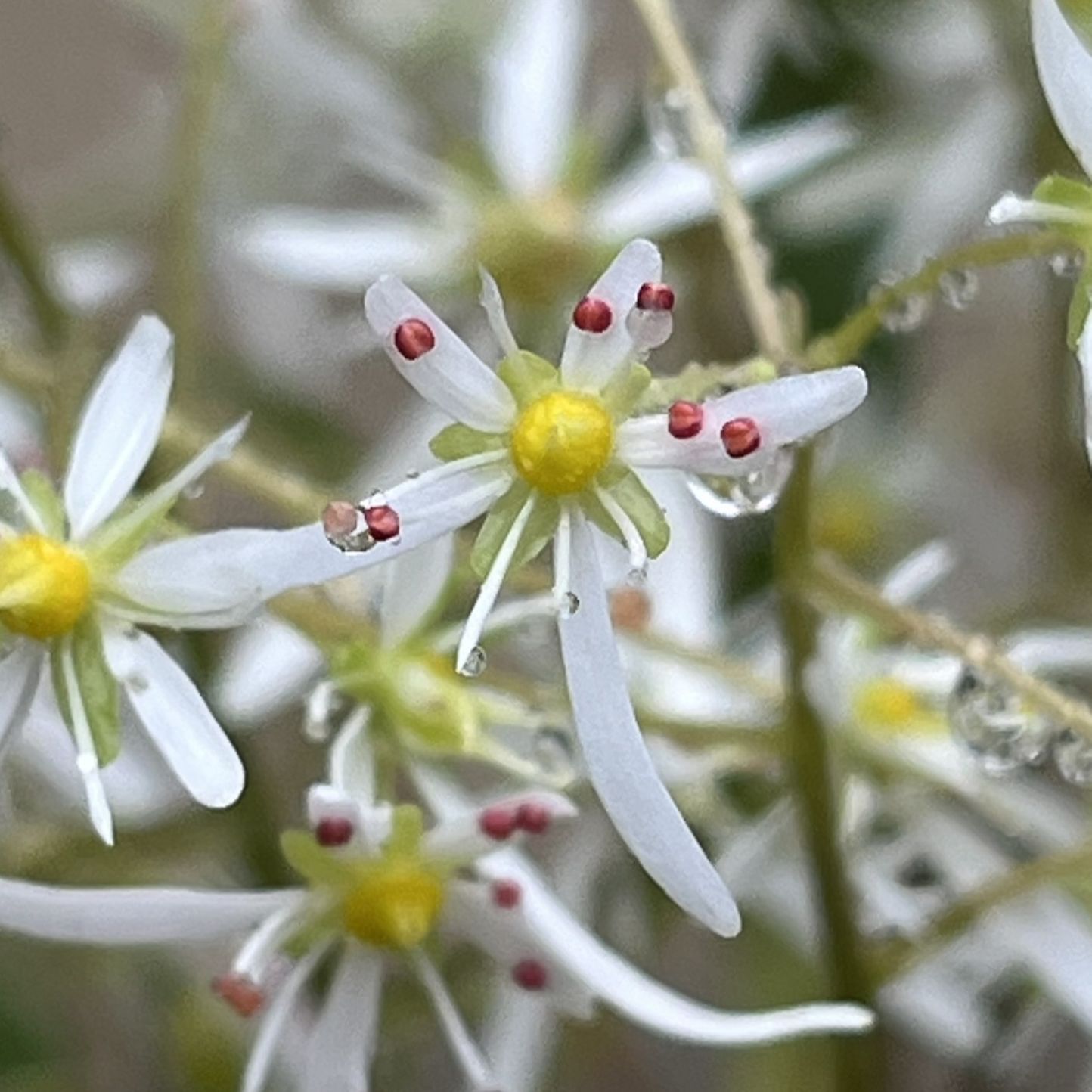ダイモンジソウは岩場の湿ったところで自生し、古くから茶花として重用。様々な園芸種が育成され、希少な山野草として愛好されています。
Saxifraga fortunei grows naturally in damp rocky areas and has long been treasured as a tea flower. Various horticultural species have been cultivated and it is a highly sought-after wild plant.
【仮名】ダイモンジソウ
【和名】大文字草
【英名】Saxifraga fortunei, Fortune’s Saxifrage
【学名】Saxifraga fortunei var. alpina
【誕生】11/ 03, 11/ 12
【開花】09, 10, 11月
【花色】White, Pink, Red
ダイモンジソウ
ダイモンジソウの概要

ダイモンジソウはユキノシタ科の多年草。日本では北海道から本州、四国、九州まで、国外ではロシア極東部、朝鮮半島、中国に分布しています。岩場の湿ったところで自生し、古くから茶花として重用。江戸時代から様々な園芸種が育成され、希少な山野草として愛好されています。
ダイモンジソウの名前

ダイモンジソウの名前の由来は花が「大」の「文字」に見える「草」。花弁5枚のうち3枚が短く、2枚が長いからです。ラテン語の属名サキシフラガは「岩を割る」という意味で自生地に由来。種小名フォルチュネイは19世紀の英国の植物学者ロバート・フォーチュンへの献名です。
ダイモンジソウの姿形

ダイモンジソウは、地下茎から繊維状の根を密生させ、地上茎から葉を束生させます。葉は柄の長い腎円形で掌状に浅裂。光沢があり、不規則な鋸歯があります。花は花弁が5枚、雄しべが10本、雌しべが2裂。花後は卵形の蒴果を結び、熟すと2つに裂けて微細な種子を散らします。
ダイモンジソウの近縁

ダイモンジソウの近縁種「人字草」も岩場で繊細な花を咲かせます。花弁3枚が短く、花弁2枚が細長く、花が「人」の字。近縁種「雪の下」も湿ったところで丸みを帯びた花を咲かせます。花弁3枚に桃色の斑点模様が入り、花弁2枚が幅広。どちらも似ていながら微妙に違います。
Saxifraga fortunei

Saxifraga fortunei is a perennial plant of the Saxifragaceae family. It is found in Japan from Hokkaido to Honshu, Shikoku, and Kyushu, and overseas in the Russian Far East, the Korean Peninsula, and China. It grows naturally in damp rocky areas and has long been treasured as a tea flower. Various horticultural species have been cultivated since the Edo period and it is a highly sought-after wild plant.
The Japanese name for Saxifraga fortunei means “grass of the kanji character for large.” This is because the flower has five petals, three of which are short and two are long, resembling the kanji character for large. The Latin genus name, Saxifraga, means “to split rocks” and is derived from its native habitat. The specific name, fortunei, is a tribute to the 19th-century British botanist Robert Fortune.
Saxifraga fortunei grows dense fibrous roots from underground stems and leaves in clusters from aboveground stems. The leaves are long-stalked, kidney-shaped, and palmately lobed. They are glossy and have irregular sawtooth. Flowers have five petals, ten stamens, and a two-lobed pistil. After flowering, an oval capsule forms, which ripens and splits into two, scattering tiny seeds.
A closely related species to Saxifraga fortunei, Saxifraga cortusifolia, also produces delicate flowers in rocky areas. With three short petals and two elongated petals, the flower’s shape resembles the Chinese character for “person.” A closely related species, Saxifraga stolonifera, also produces rounded flowers in moist conditions. Three petals are pink-speckled, and two are broad. Although both cortusifolia and stolonifera are similar to fortunei, they are subtly different.


